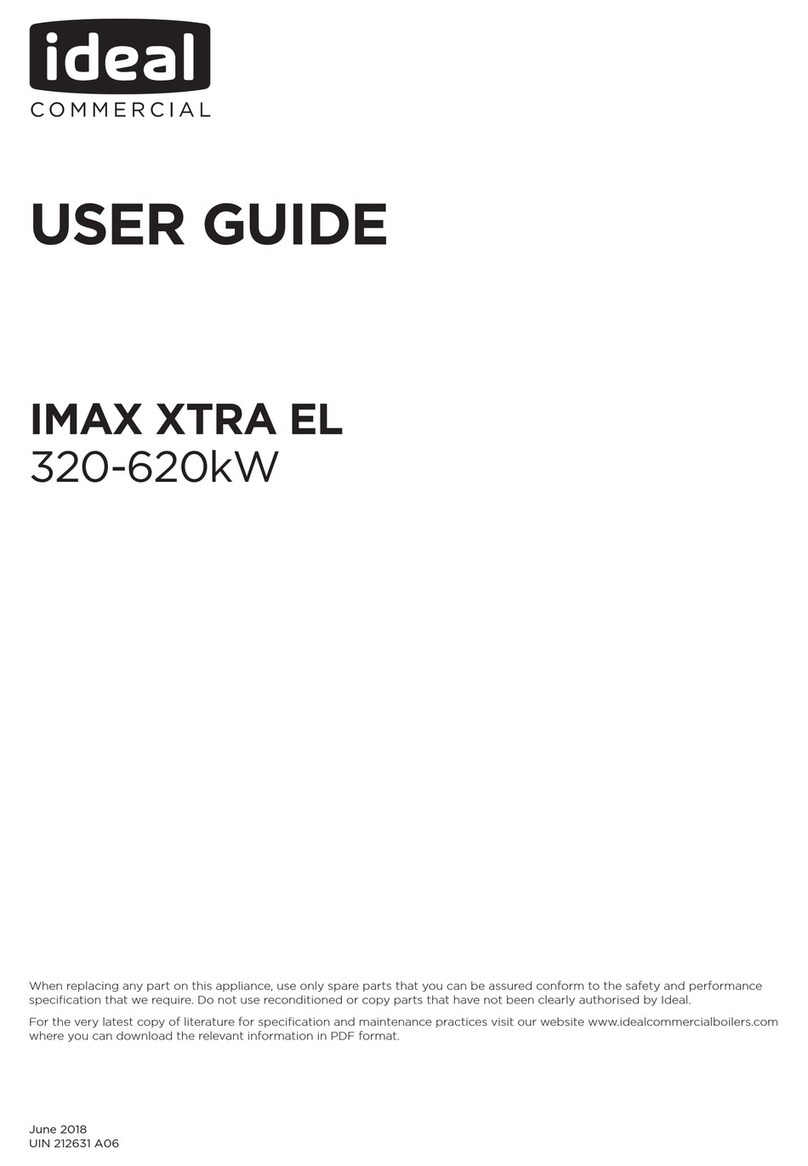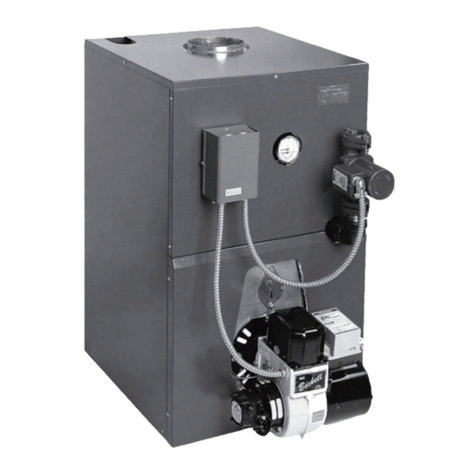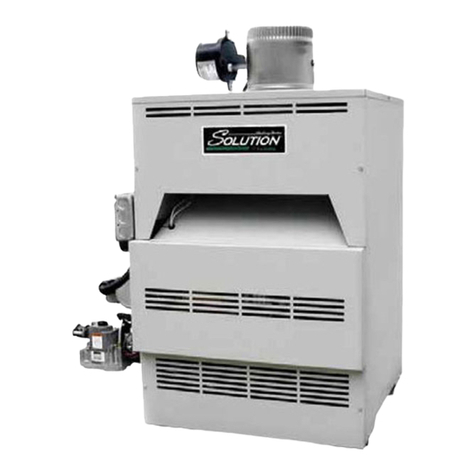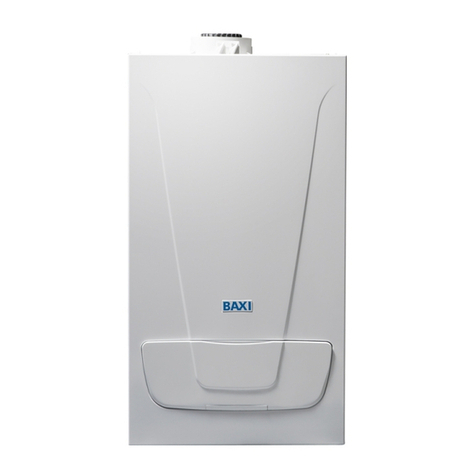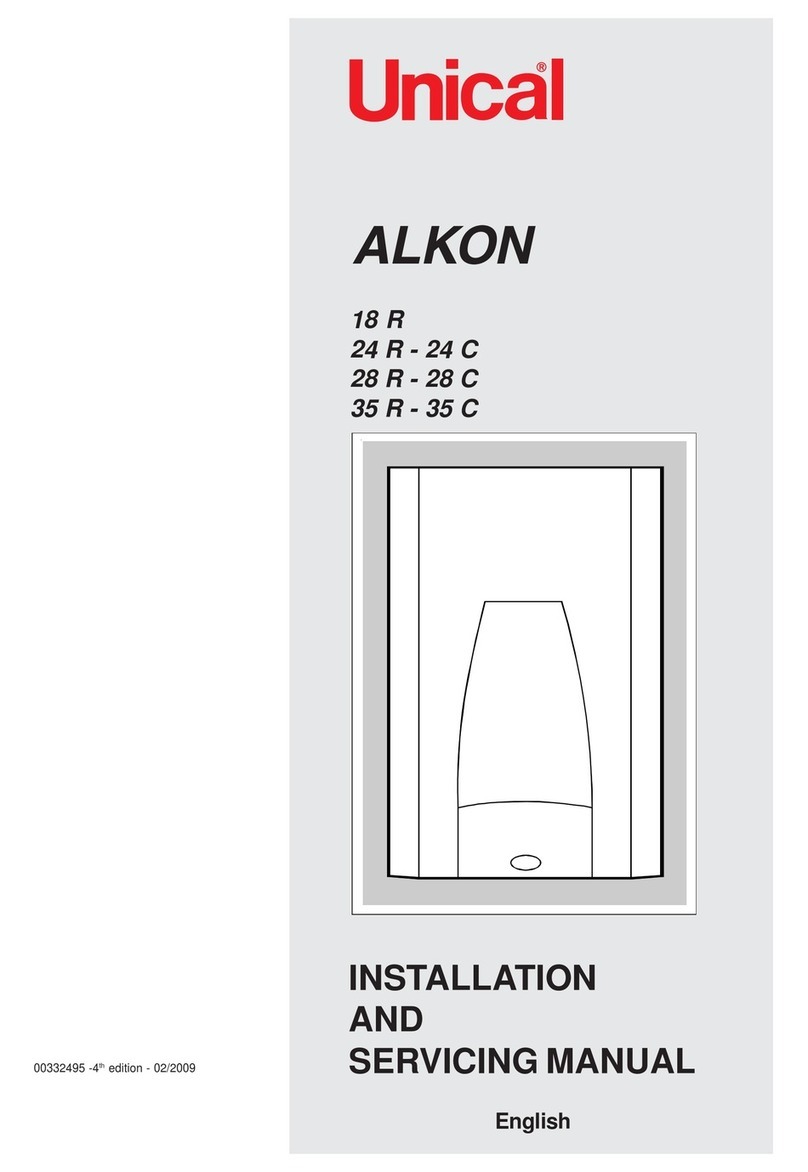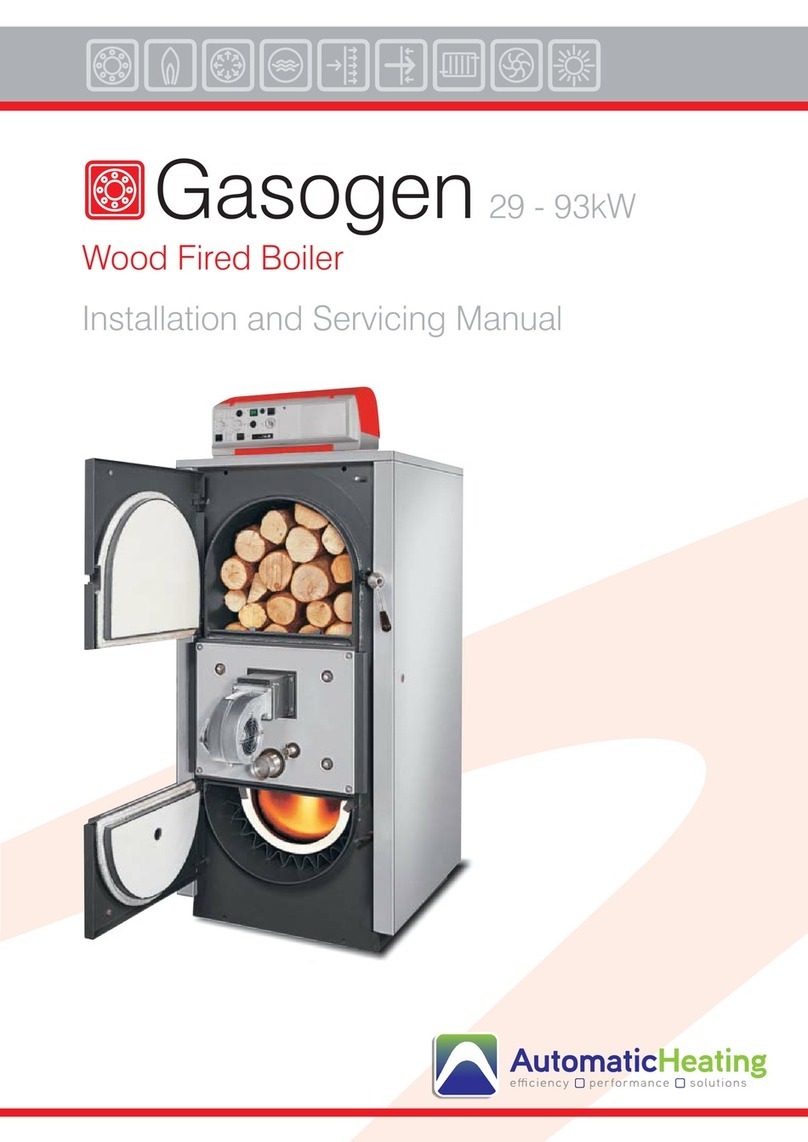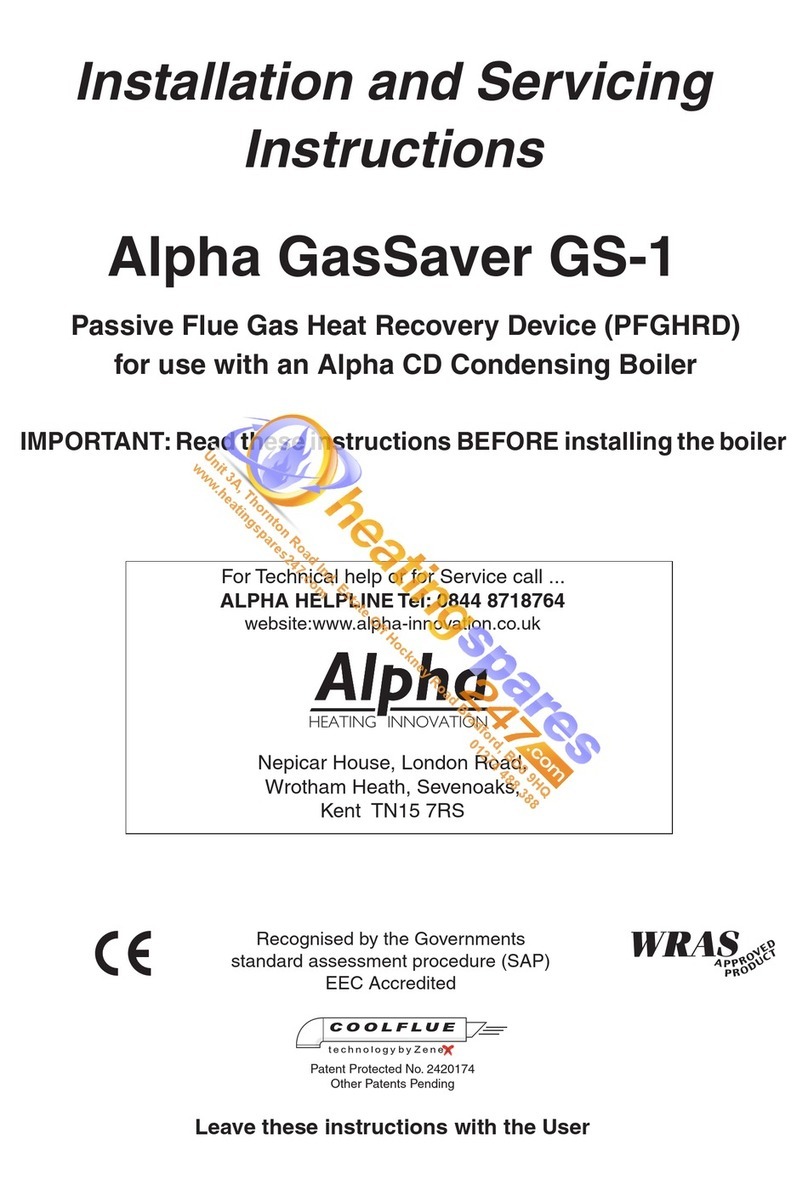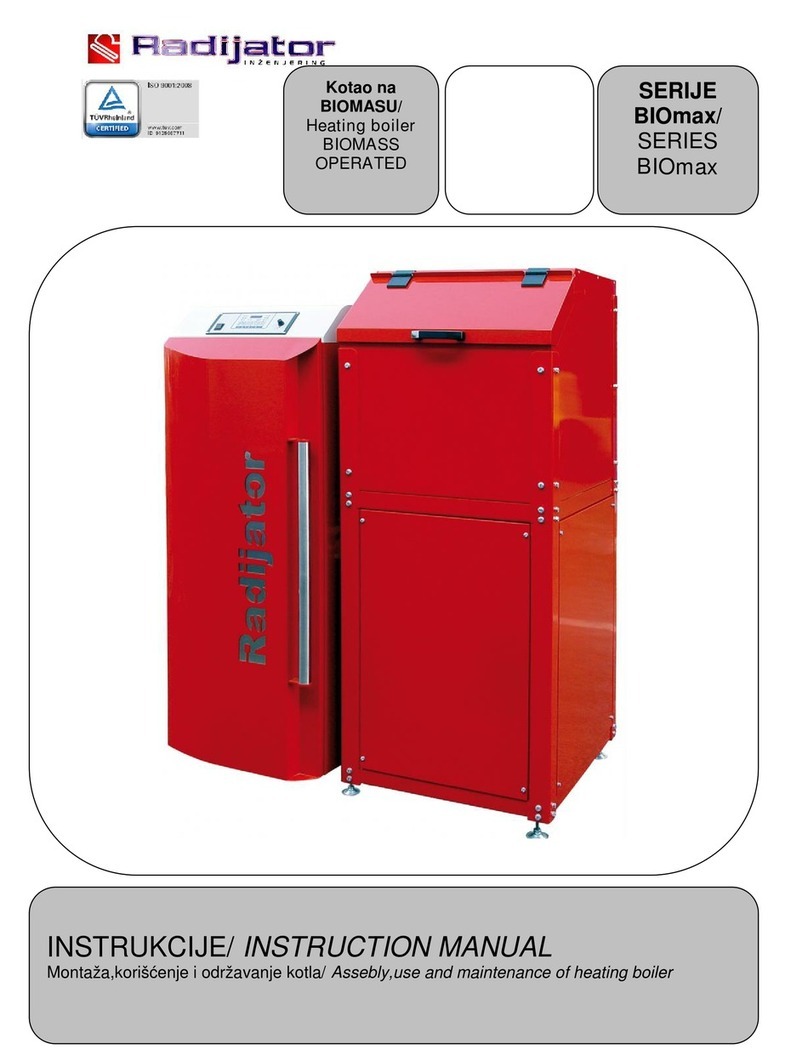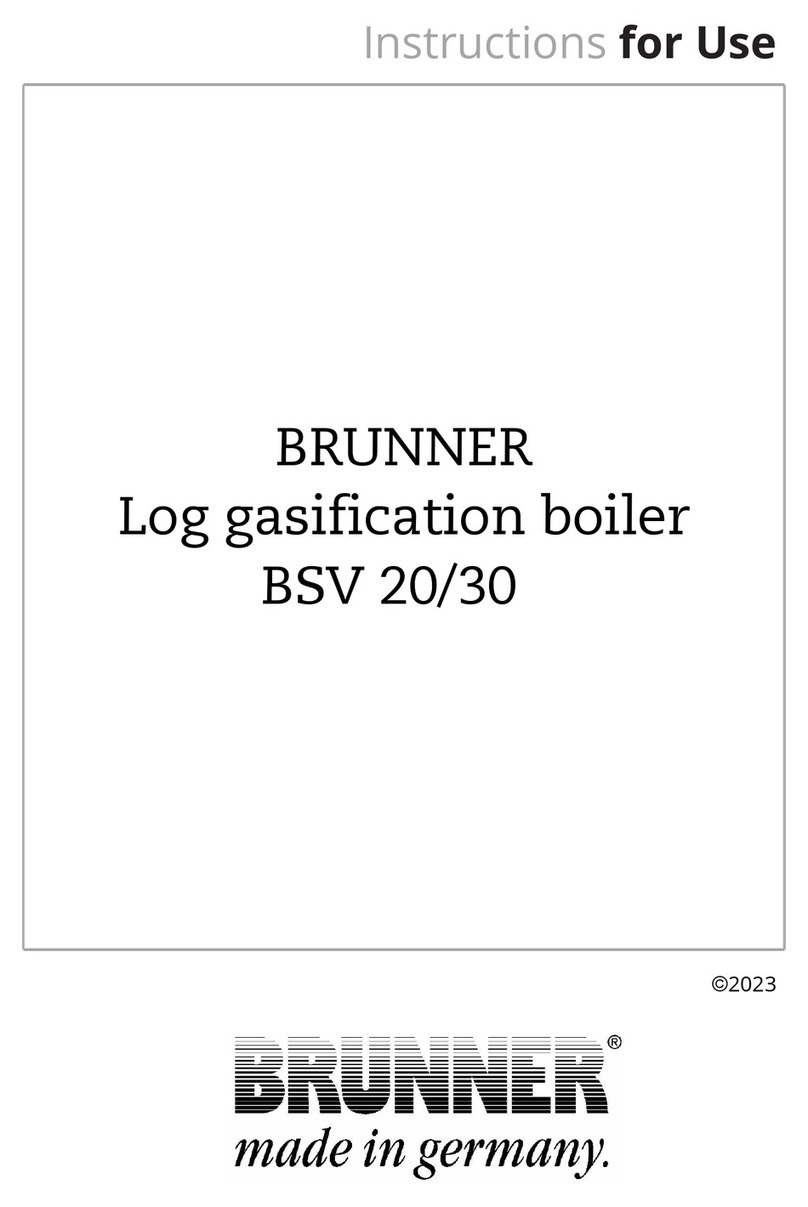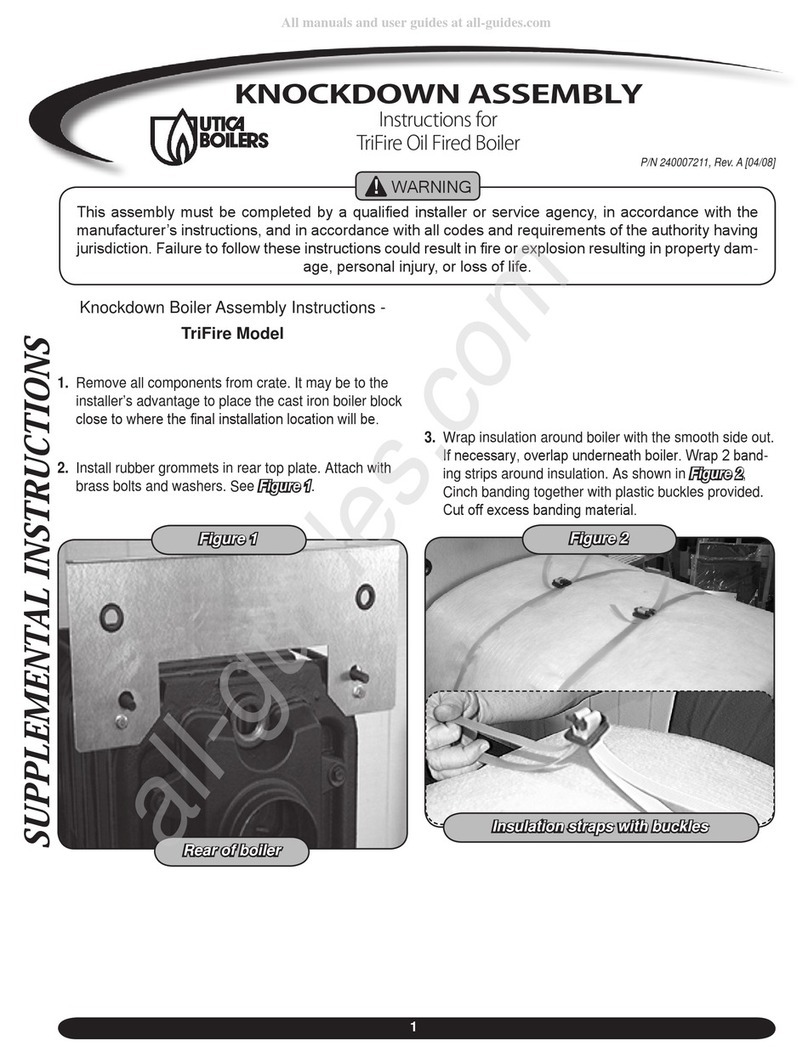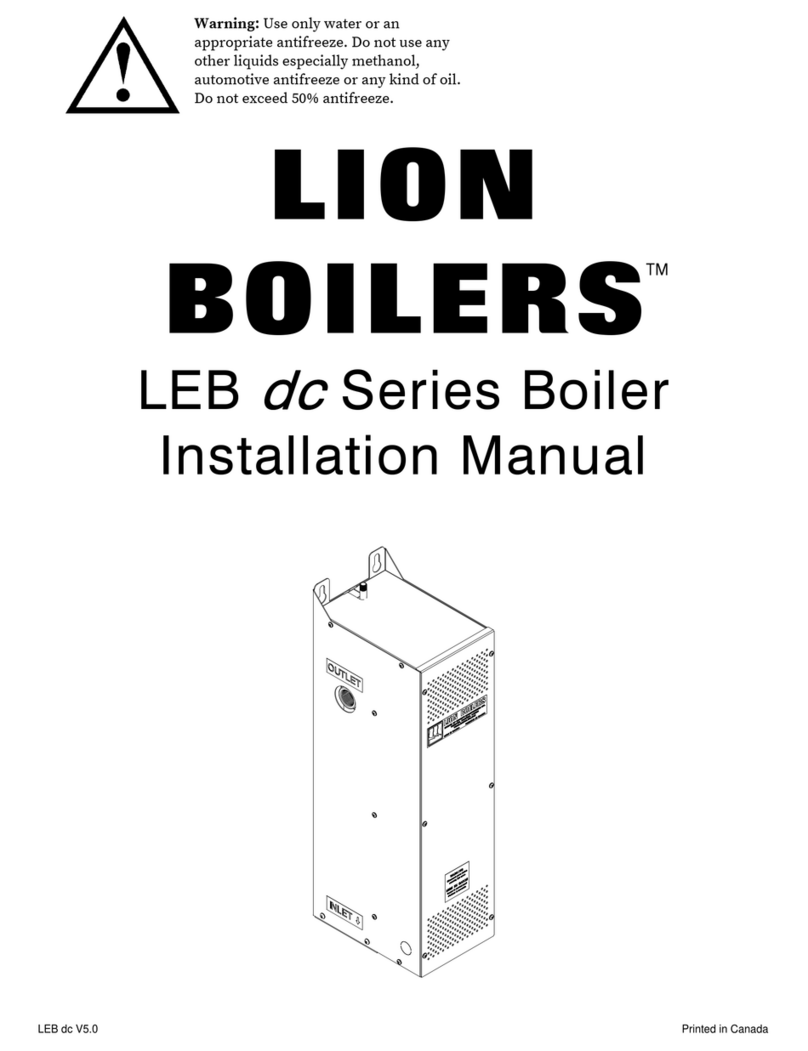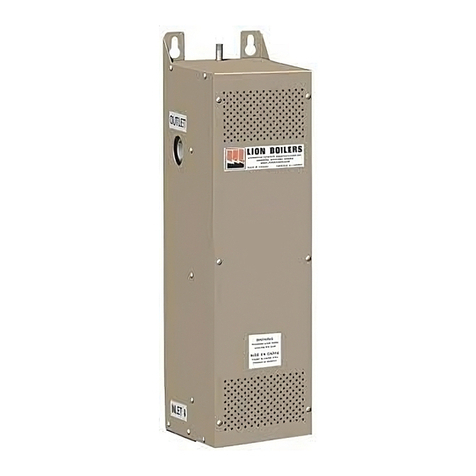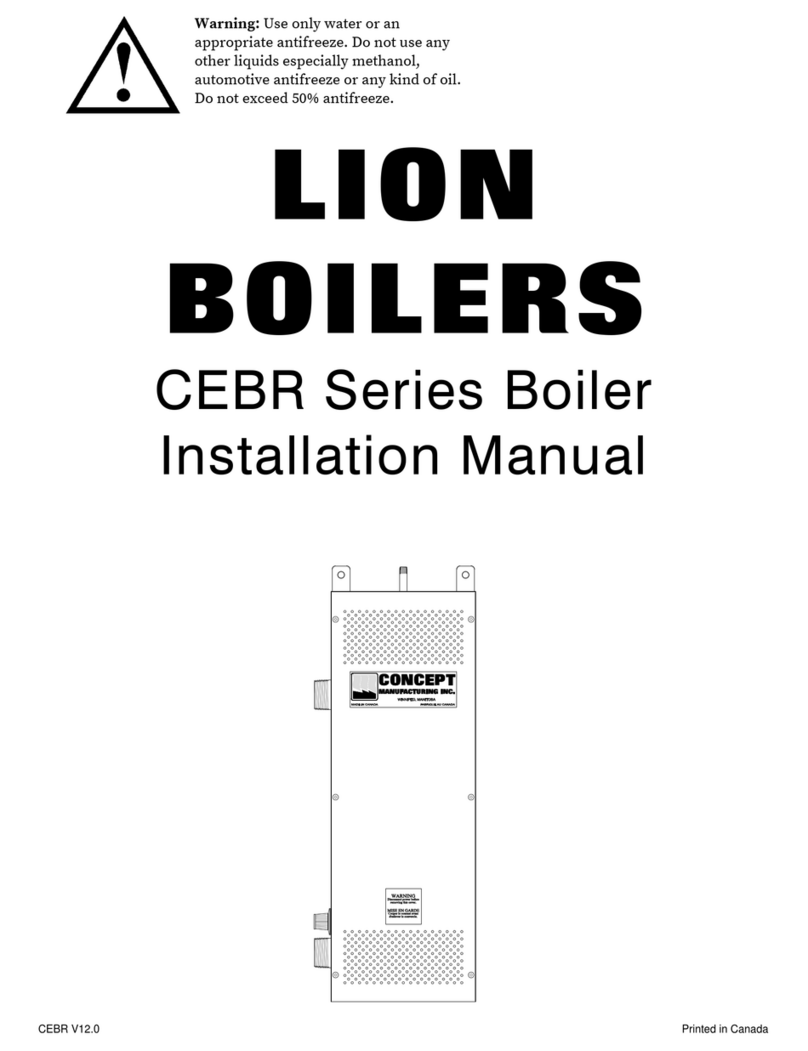
Thermostat Anticipators
The thermostat anticipator setting recommended is 0.2 amps. Failure to correctly
adjust this setting may result in unsatisfactory comfort conditions, and could result in
damage to the thermostat.
This setting may have to be adjusted slightly to ideally match the boiler control system
to the thermostat, as well as overcome the normal inertia of the radiation system. A
setting to low will be characterized by a short cycle, which does not allow the room
temperature to be satisfied before the boiler shuts down. A setting too high will be
characterized by a long cycle, which allows the room temperature to rise too high
before the boiler shuts down. Adjustments should be made to the setting, if required,
but should not exceed 0.1 amps per adjustment.
Newer electronic thermostats typically have provisions for the cycle length, and type of
heating system. The instructions for the thermostat should be followed.
In zoned systems where the thermostat is controlling a zone valve, or circulation pump
and not the boiler, the anticipator should be set to match the current draw of the zone
valve being used.
Temperature Control Setting (Aquastat)
The boiler has a temperature control knob known as an aquastat on the left hand side.
This sets the maximum temperature that the boiler will operate at while in the normal
mode. The internal control system monitors the water temperature in the tank and
modulates the heating elements to maintain the desired water temperature. Note that
the setting on the knob only sets the maximum temperature, it is normal for the boiler
to operate at lower temperatures than this setting at times, this is especially true in the
spring and fall when it is not so cold outside. The actual temperature setting will be
determined by the type of heating system the boiler is installed in. While in priority
mode the aquastat setting is overridden as the boiler goes to it's high temperature
operation, the water temperature is controlled to 180°F .
Outdoor Temperature Sensor Connection
The outdoor temperature sensor should be mounted in a suitable location outside the
building where it will be exposed to the outside air. Mount the sensor high enough so
it will not be covered by snow or ice, and in a location where it will not be exposed to
direct sunlight.
The outdoor temperature sensor is connected to the terminals “OD STAT” on the
control circuit board see Fig. 4 and Fig. 5).
9
